
Industrial conglomerate Honeywell (NASDAQ: HON) beat Wall Street’s revenue expectations in Q3 CY2025, with sales up 7% year on year to $10.41 billion. The company expects the full year’s revenue to be around $40.8 billion, close to analysts’ estimates. Its non-GAAP profit of $2.82 per share was 9.9% above analysts’ consensus estimates.
Is now the time to buy Honeywell? Find out by accessing our full research report, it’s free for active Edge members.
Honeywell (HON) Q3 CY2025 Highlights:
- Revenue: $10.41 billion vs analyst estimates of $10.15 billion (7% year-on-year growth, 2.6% beat)
- Adjusted EPS: $2.82 vs analyst estimates of $2.57 (9.9% beat)
- The company reconfirmed its revenue guidance for the full year of $40.8 billion at the midpoint
- Management raised its full-year Adjusted EPS guidance to $10.65 at the midpoint, a 1.9% increase
- Operating Margin: 16.9%, down from 21.8% in the same quarter last year
- Free Cash Flow Margin: 28%, up from 17.7% in the same quarter last year
- Organic Revenue rose 6% year on year vs analyst estimates of 3.2% growth (283.8 basis point beat)
- Market Capitalization: $131.2 billion
Vimal Kapur, chairman and chief executive officer of Honeywell, commented, "As we progressed toward separating into three industry-leading public companies, we drove strong financial results and unlocked new value creation opportunities during the third quarter. Increased orders across our business segments pushed the company's total backlog to another record high and reinforced the benefit of the new, innovative solutions we are delivering for customers. All of this translated to us exceeding the high end of our guidance for both organic growth and adjusted earnings per share in the quarter."
Company Overview
Originally founded in 1906 as a thermostat company, Honeywell (NASDAQ: HON) is a multinational conglomerate known for its aerospace systems, building technologies, performance materials, and safety and productivity solutions.
Revenue Growth
Examining a company’s long-term performance can provide clues about its quality. Even a bad business can shine for one or two quarters, but a top-tier one grows for years. Unfortunately, Honeywell’s 4.1% annualized revenue growth over the last five years was sluggish. This fell short of our benchmark for the industrials sector and is a poor baseline for our analysis.
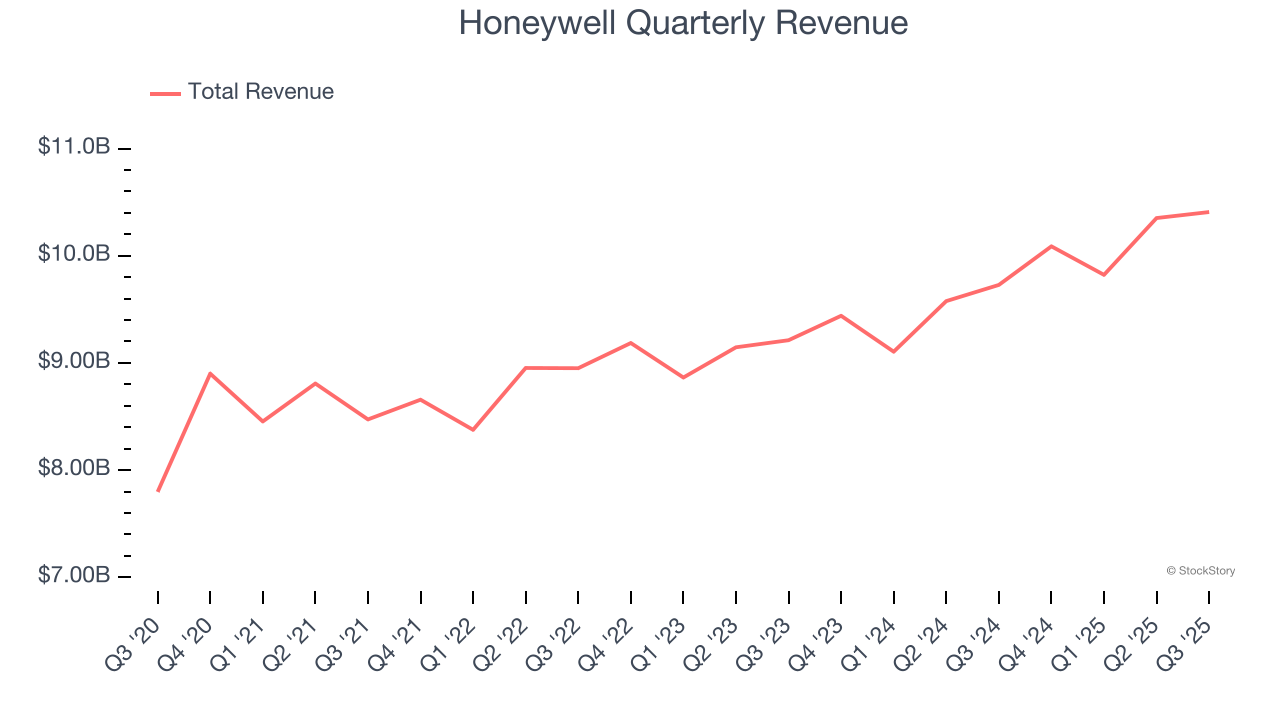
We at StockStory place the most emphasis on long-term growth, but within industrials, a half-decade historical view may miss cycles, industry trends, or a company capitalizing on catalysts such as a new contract win or a successful product line. Honeywell’s annualized revenue growth of 5.7% over the last two years is above its five-year trend, but we were still disappointed by the results. 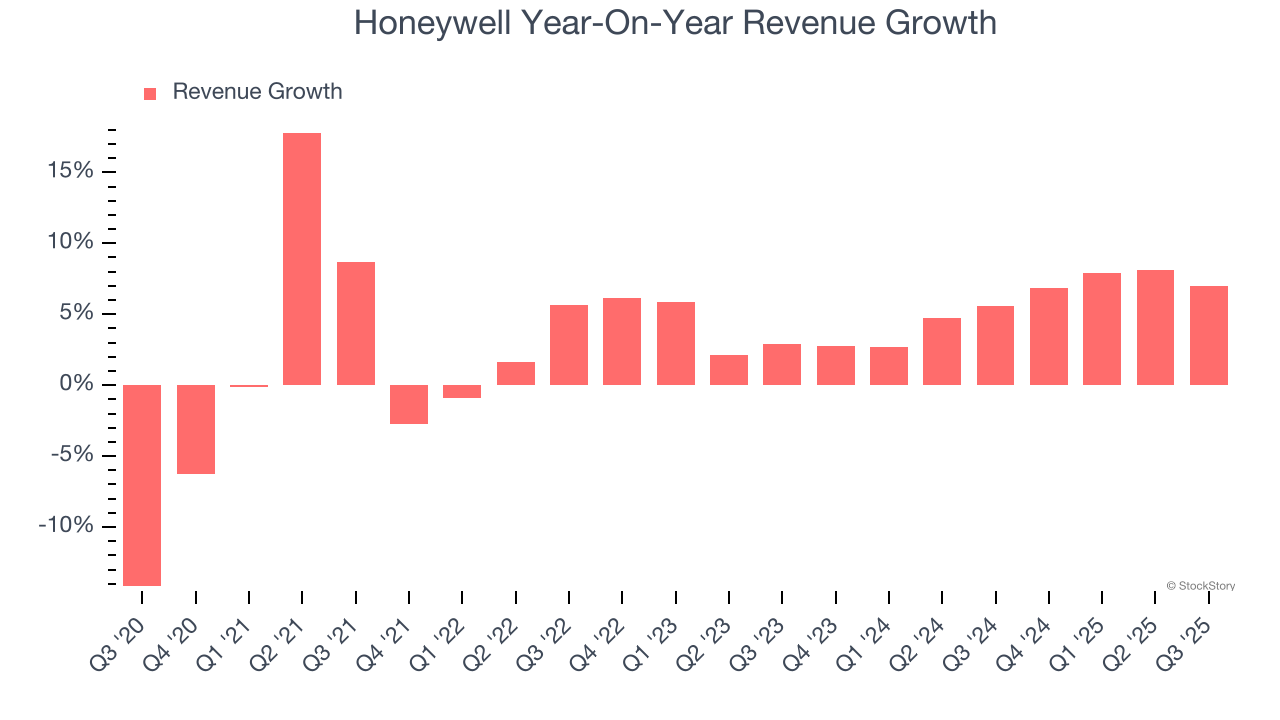
We can better understand the company’s sales dynamics by analyzing its organic revenue, which strips out one-time events like acquisitions and currency fluctuations that don’t accurately reflect its fundamentals. Over the last two years, Honeywell’s organic revenue averaged 3.6% year-on-year growth. Because this number is lower than its two-year revenue growth, we can see that some mixture of acquisitions and foreign exchange rates boosted its headline results. 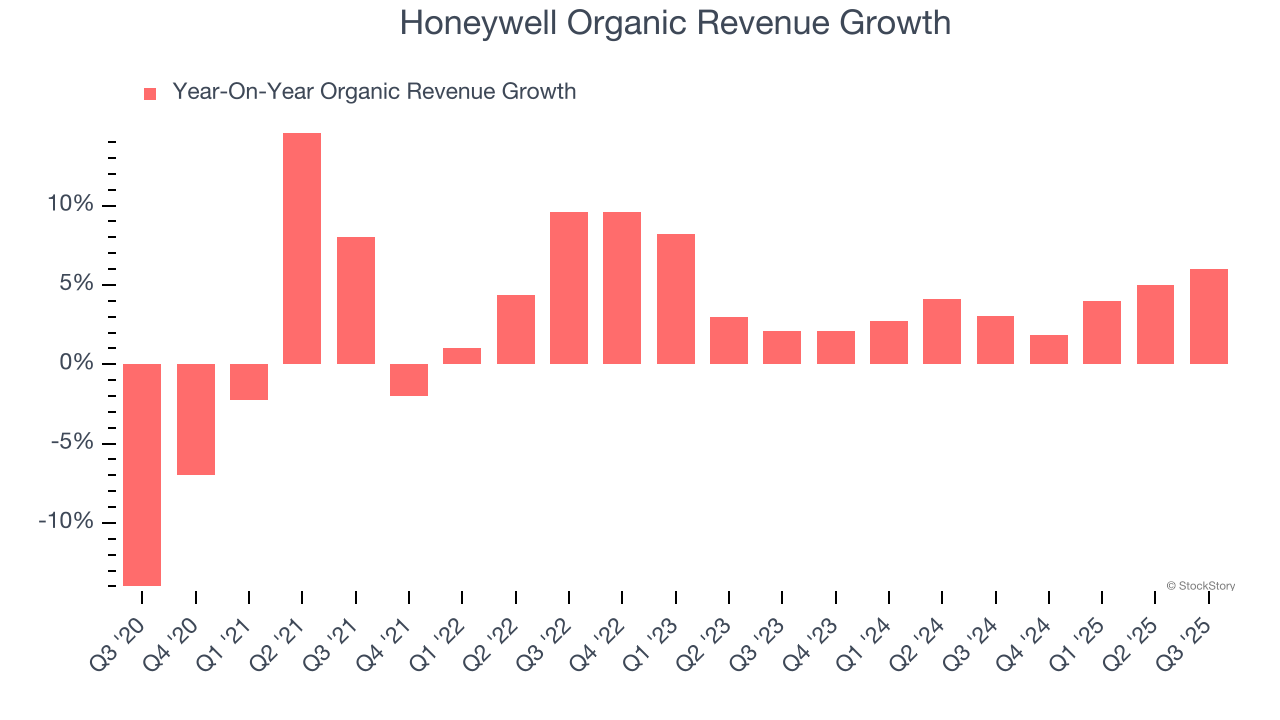
This quarter, Honeywell reported year-on-year revenue growth of 7%, and its $10.41 billion of revenue exceeded Wall Street’s estimates by 2.6%.
Looking ahead, sell-side analysts expect revenue to grow 3.5% over the next 12 months, a slight deceleration versus the last two years. This projection doesn't excite us and indicates its products and services will face some demand challenges.
Software is eating the world and there is virtually no industry left that has been untouched by it. That drives increasing demand for tools helping software developers do their jobs, whether it be monitoring critical cloud infrastructure, integrating audio and video functionality, or ensuring smooth content streaming. Click here to access a free report on our 3 favorite stocks to play this generational megatrend.
Operating Margin
Honeywell has been a well-oiled machine over the last five years. It demonstrated elite profitability for an industrials business, boasting an average operating margin of 20.9%. This result isn’t surprising as its high gross margin gives it a favorable starting point.
Looking at the trend in its profitability, Honeywell’s operating margin decreased by 2.1 percentage points over the last five years. This raises questions about the company’s expense base because its revenue growth should have given it leverage on its fixed costs, resulting in better economies of scale and profitability.
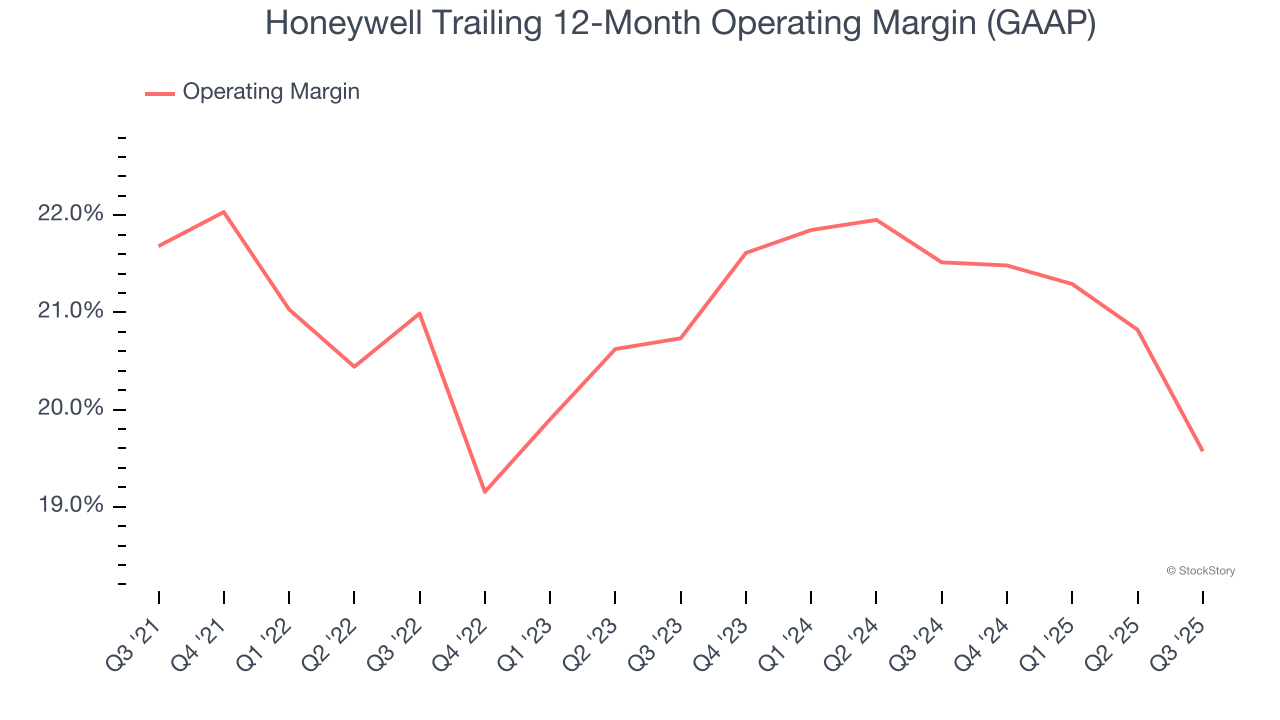
In Q3, Honeywell generated an operating margin profit margin of 16.9%, down 5 percentage points year on year. Since Honeywell’s operating margin decreased more than its gross margin, we can assume it was less efficient because expenses such as marketing, R&D, and administrative overhead increased.
Earnings Per Share
We track the long-term change in earnings per share (EPS) for the same reason as long-term revenue growth. Compared to revenue, however, EPS highlights whether a company’s growth is profitable.
Honeywell’s EPS grew at a decent 8.3% compounded annual growth rate over the last five years, higher than its 4.1% annualized revenue growth. However, this alone doesn’t tell us much about its business quality because its operating margin didn’t improve.
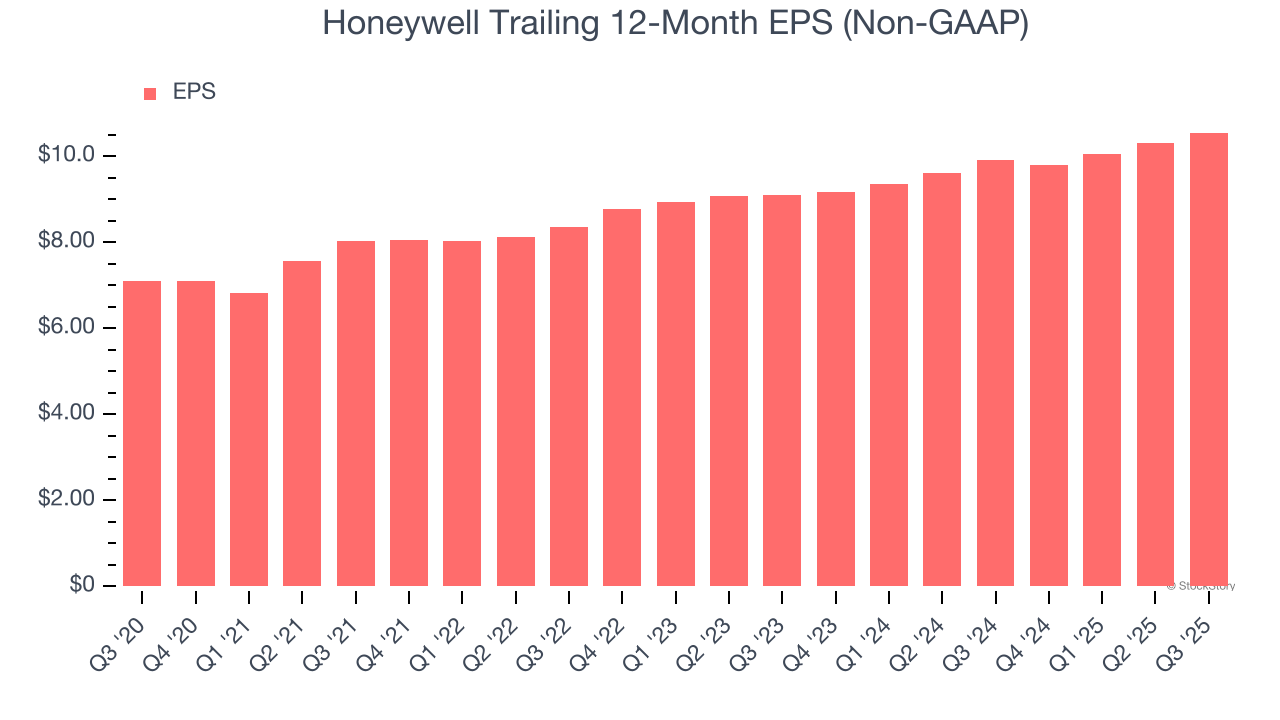
Diving into the nuances of Honeywell’s earnings can give us a better understanding of its performance. A five-year view shows that Honeywell has repurchased its stock, shrinking its share count by 10%. This tells us its EPS outperformed its revenue not because of increased operational efficiency but financial engineering, as buybacks boost per share earnings. 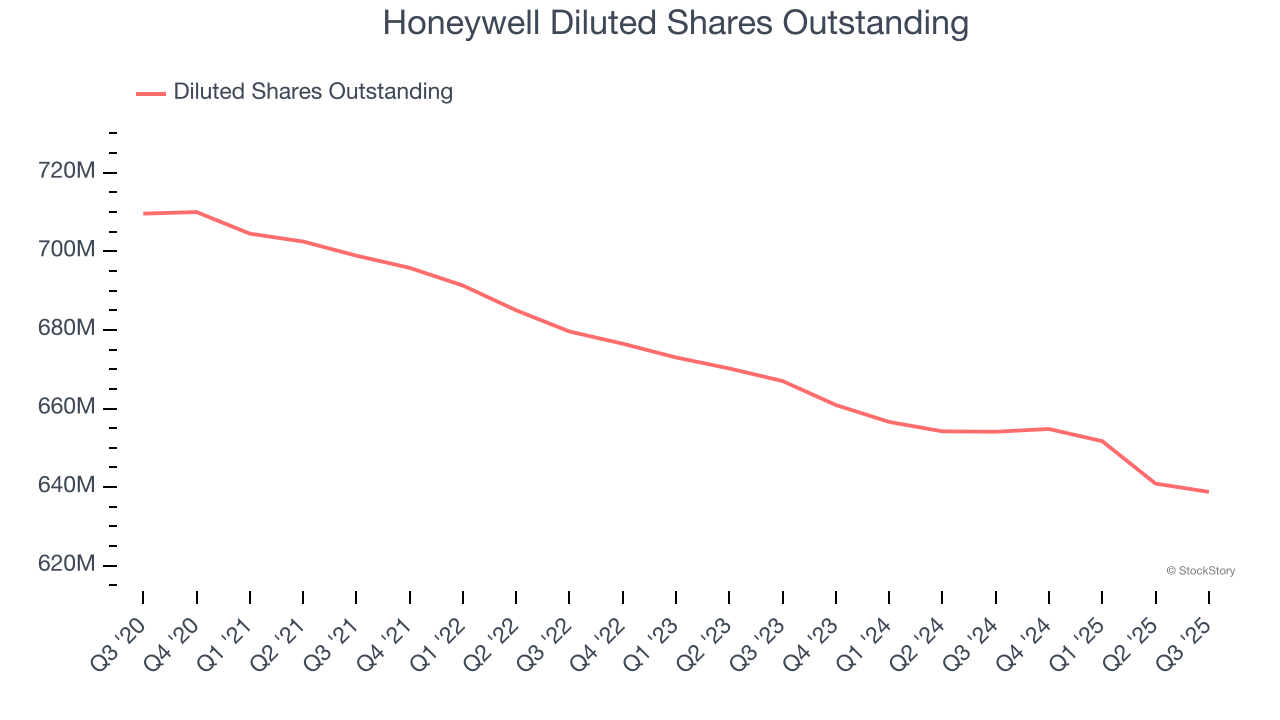
Like with revenue, we analyze EPS over a more recent period because it can provide insight into an emerging theme or development for the business.
For Honeywell, its two-year annual EPS growth of 7.7% is similar to its five-year trend, implying stable earnings.
In Q3, Honeywell reported adjusted EPS of $2.82, up from $2.58 in the same quarter last year. This print beat analysts’ estimates by 9.9%. Over the next 12 months, Wall Street expects Honeywell’s full-year EPS of $10.55 to grow 2.8%.
Key Takeaways from Honeywell’s Q3 Results
We enjoyed seeing Honeywell beat analysts’ organic revenue expectations this quarter. We were also glad its revenue outperformed Wall Street’s estimates. Overall, we think this was a decent quarter with some key metrics above expectations. The stock traded up 5% to $216.89 immediately after reporting.
Honeywell may have had a good quarter, but does that mean you should invest right now? The latest quarter does matter, but not nearly as much as longer-term fundamentals and valuation, when deciding if the stock is a buy. We cover that in our actionable full research report which you can read here, it’s free for active Edge members.






